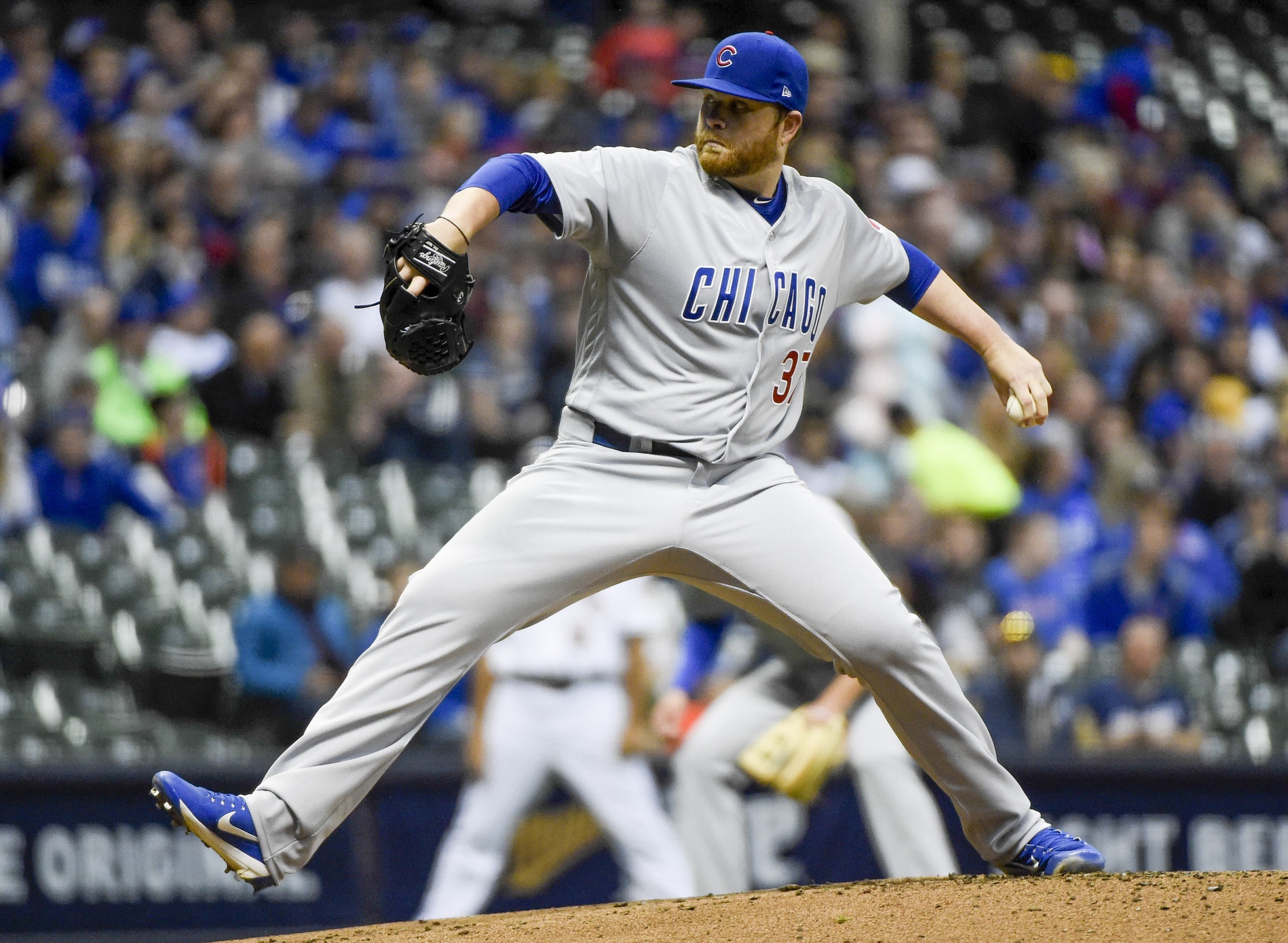In 2016, teams employed a defensive shift more than ever before. Across the majors, teams shifted 28,072 times. The Cubs, whose defense maintained a historically good BABIP, shifted the least with just 603 batters faced with some sort of defensive shift in place. The Cubs appear to be one step ahead against the rest of the league since Russell A. Carleton has found that teams are shifting too much. Carleton found that while BABIP on groundballs against the shift has decreased, line drive rates have improved for batters facing a shift and pitchers are throwing more balls, thus increasing the likelihood for more walks and higher pitch counts. Hitters may actually be getting more hits when the shift is in place which, of course, defeats the purpose of shifting.
The Cubs, however, may have a prime candidate for employing a shift in spite of all of this.
Brett Anderson, the Cubs fifth fourth starter, matches the profile for a shift-worthy pitcher. In his last full season, Anderson induced a 66.3 percent groundball rate. To put that in perspective, Marcus Stroman led all of baseball last year with 60.1 percent and Jake Arrieta led the Cubs with 52.6 percent. On Saturday, in his first start in Cubbie blue, Anderson retired eight Brewers on groundouts in 5.2 innings and he did so using all of his pitches. If there’s a pitcher for the Cubs that Joe Maddon should consider shifting behind more often, it’s Brett Anderson. So far, the lefty has been immune from the shift’s side effects.
Anderson has only faced 136 batters when the shift is on, so it is probably a tad premature to draw any definitive conclusions in terms of line drives, but the early returns are encouraging. Without the shift, hitters possess an 18.1 percent line drive rate against Anderson, but with the shift, that number drops to 15 percent. The hard hit rates remain steady at 24.7 percent without and 24.3 with the shift, so batters aren’t squaring up the ball any better with the shift on.
The ground ball rate, though, increases from 61.7 percent to 67.7. According to this research done by Derek Carty, ground ball rate stabilizes at 105 batters faced so there’s more confidence in Anderson’s superlative ground ball rate than the line drive rate. Even if Anderson’s line drive rate regressed toward his average or went above it, a shift would still make sense. If the point of the shift is to make ground balls easier to field, it makes sense to put it on more often if the pitcher is able to get a ground ball two-thirds of the time.
Carleton also found that pitchers threw more balls when the defense shifted behind them. The cause and effects of this are unclear, but it stands to reason that more balls leads to more walks and it certainly leads to higher pitch counts.
In his career without the shift, Anderson has thrown 5,031 pitches with 3,354 called for strikes—which comes out to 66.67 percent strikes. With the shift, Anderson has thrown 412 pitches, with 278 called for strikes or 67.4 percent strikes, which is virtually no difference. It’s hard to say why Anderson finds the strike zone at the same frequency with the shift when the population at large has a harder time. Perhaps other pitchers try throwing to the inner part of the plate with the shift on to ensure the batter pull the ball and that leads to more missed pitches. Perhaps Anderson feels more comfortable throwing inside and therefore misses less. Whatever the reason, the increased ball totals doesn’t seem to be an issue for him.
What does seem to be an issue, at least in small samples, is that hitters, despite the increased ground ball and decreased line drive rates have hit Anderson better with the shift on than not. Without the shift, hitters have slashed .309/.310/.379 against Anderson. With the shift, hitters have hit .338/.348/.405. Opponent average and slugging doesn’t stabilize as quickly as ground ball, strikeout, and walk rates, and the quality of his opponents is likely much stronger in the shifted population since shifts are generally reserved for lefty power hitters like Rizzo, Adrian Gonzalez, Joey Votto, and David Ortiz. There’s more than enough reason to doubt that slash line.
On Saturday, the Cubs opted not to shift on Travis Shaw, nor should they have. Shaw, who was the only lefty in the Brewers lineup, isn’t a dead pull hitter. But it will be interesting to see if the Cubs opt to shift more against lefty-heavy lineups who pull the ball. Anderson is scheduled to pitch against the Dodgers later this week, so we’ll get to see. Of course, the Cubs could opt for a “if it’s not broke, don’t fix it” policy, but Anderson’s success with getting the ground ball could give them reason to switch things up.
Lead photo courtesy Benny Sieu—USA Today Sports

Brilliant. Thanks for the deep research and thorough analysis